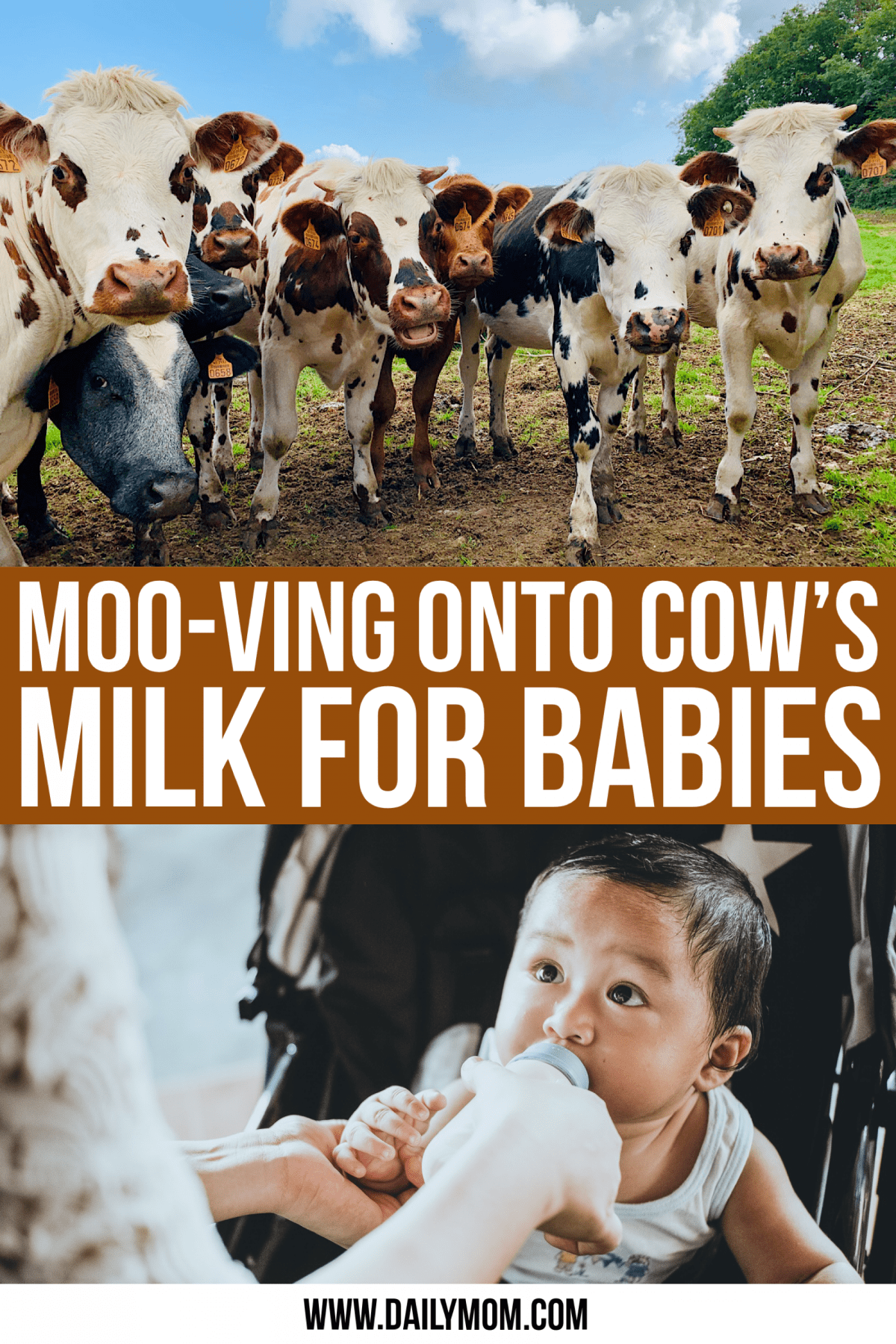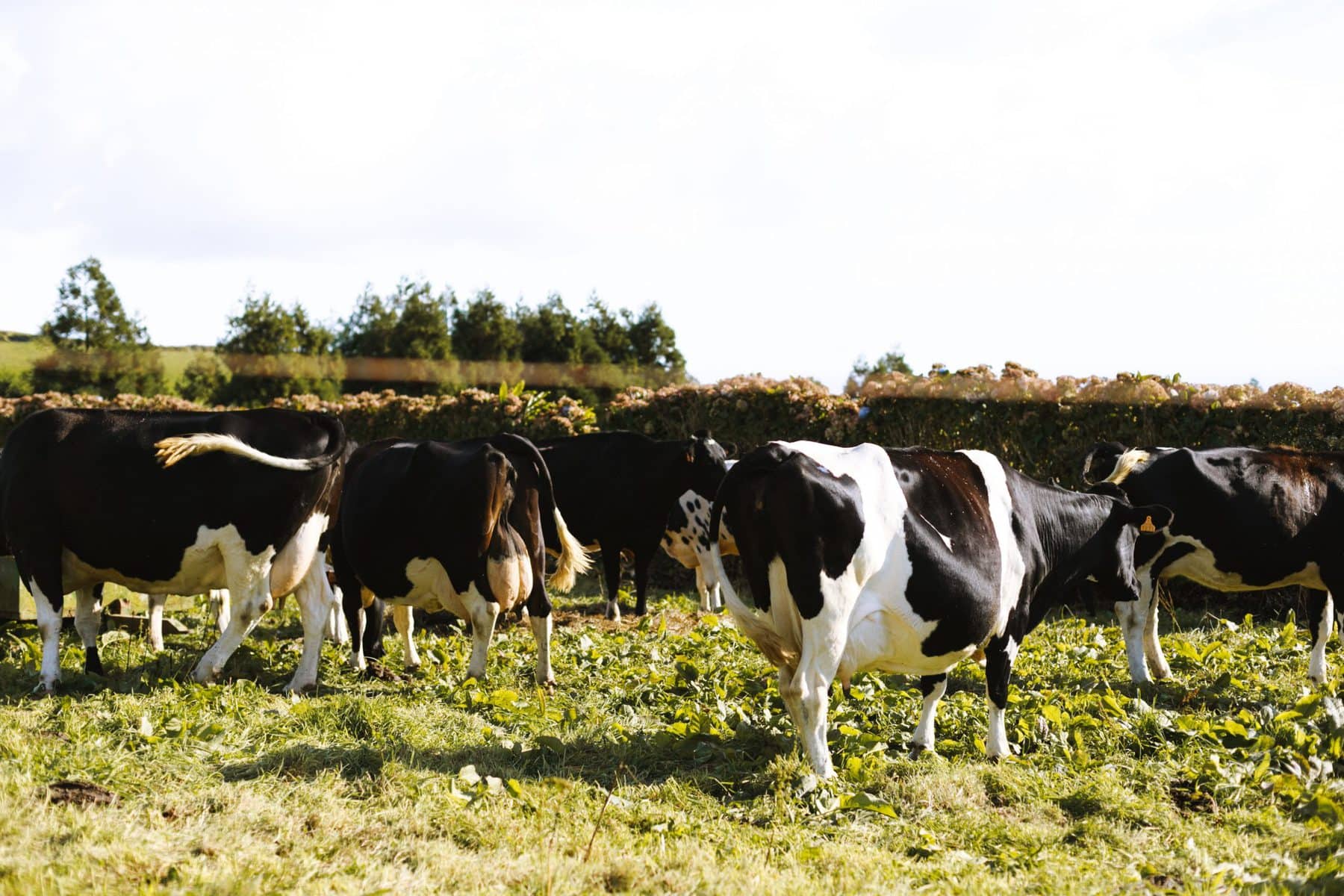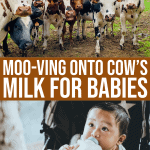Happy first year parents! On to the next round of fun adventures, transitions and milestones to conquer. Transitioning from breast milk or formula to cows milk for babies is not always easy. The texture, taste and temperature are completely different than what they have been used to for the last year and could have them refuting and potentially tossing sippy cups around for a period of time. Let’s talk through why, when and how moo-ving into cows milk for your baby will be instrumental for their growth and development.
Why Cows Milk For Babies?
“Milk does a body good”. Who remembers that slogan from the ’80s during Saturday morning commercial time? While formula and breast milk are instrumental for providing key nutrients in the first year of life, cows milk for babies contains additional important nutrients for their little growing bodies. Some of the top nutrients your little one will receive from whole cows milk are calcium and vitamin D for growing strong bones, protein to help with muscle growth and essential dietary fats for growth and brain development.
Some of you may be thinking your child is a great eater and can get these nutrients through their diet, right? Yes, technically your little one can receive the nutritional value from their food that cows milk provides, assuming they eat essential foods containing these great nutrients. Then cows milk for babies becomes an added supplemental bonus! However, there are going to be a lot of days ahead where those foods that contain all that great calcium, vitamin D, and protein are not going to be of interest and all they want to eat are chicken nuggets and peanut butter crackers on a good day.
Read More: The Benefits Of Vitamins For Breastfed Babies
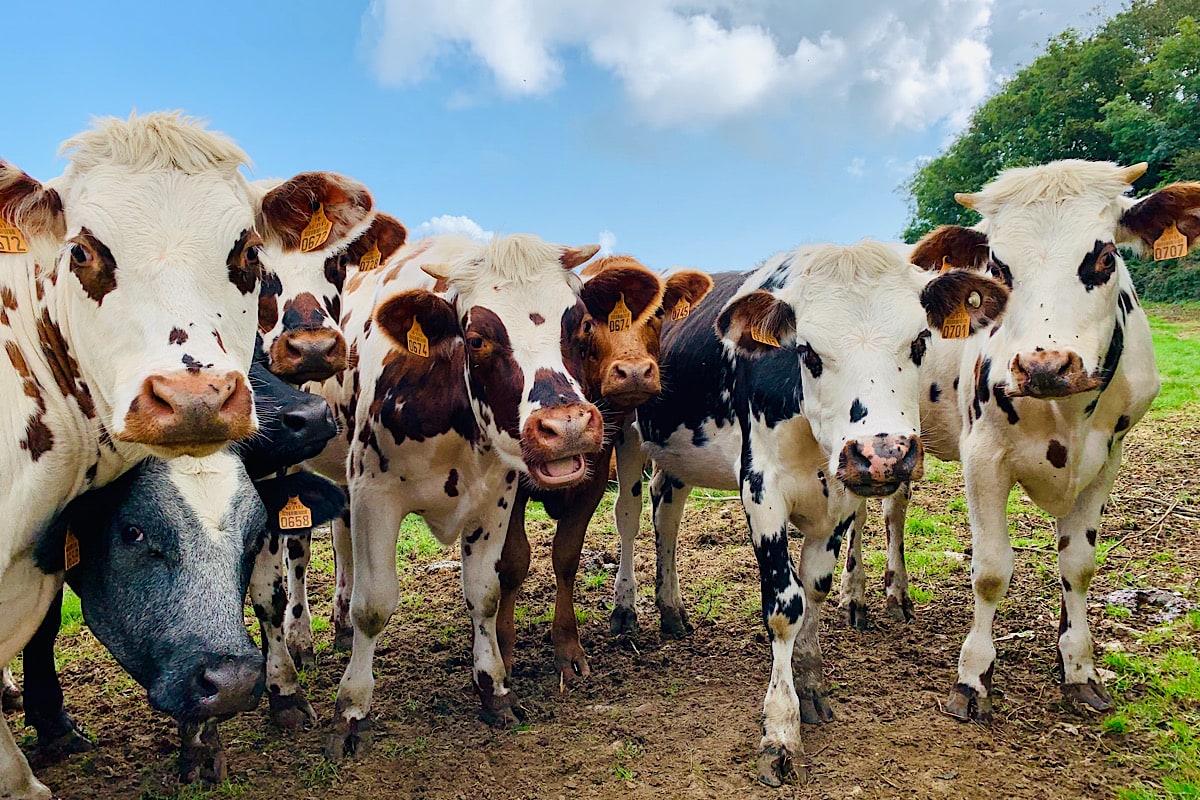
When To Introduce Cows Milk
Your baby’s nutritional needs will significantly shift as they continue getting older. The amount of formula or breast milk prior to one year your child needed was different than what they need as they continue to grow and get older. As long as your child hasn’t shown any signs of an allergy, most guidelines suggest introducing whole cows milk starting at 12 months of age.
The American Academy of Pediatrics suggests that before 12 months of age, cows milk for babies cannot be properly digested due to extra amounts of minerals, protein, sodium. Starting whole cows milk for babies too early can also lead to an iron deficiency if they’re consuming too much milk and not eating enough iron dense foods. Once your little one is old enough and can properly digest it, whole cows milk can be a great additional supplement to a well-balanced diet.
Read More: First Foods You Should Be Feeding Your Child

How to Introduce Cows Milk
Just because your child turns one doesn’t mean that magical number will make drinking milk easy for them. Some children do not mind the switch in milk, while others will have a harder time transitioning. Introducing cows milk doesn’t need to be difficult and discouraging, so here are some easy tips to try if your baby is turning up their nose to this new liquid:
- Try a variety of brands. This may sound silly because all milk should be made the same, right? Sure, but it could be their taste buds, and offering a different brand of cows milk for babies could help with the taste. We all have our preferred brands and taste, so why would your baby be any different.
- Mix it up. At first, you may need to mix in some formula or breast milk so there is some recognition of taste from what they have been drinking for the past year. Gradually increase the ratio of cows milk to formula/breast milk until you eventually get to all cows milk for your little one.
- Temperature control. You may have been warming bottles and breast milk is definitely not chilled so this new cold liquid could be a turn-off. Before serving, let your cup of milk sit out at room temperature. If you are gradually mixing in formula, you could always combine warm formula with chilled milk to regulate the temp. While your little one would prefer warm milk, transitioning to cold milk is doable, it just takes time and patience.
- Offer other calcium options. If your baby continuously refuses cows milk, ensure consistency by making milk a part of a meal and/or snack time. If you feel as though your baby is not getting enough calcium, offer other calcium-rich foods such as yogurt, cheese, beans, and lentils.
Read More: Picky Eaters: 3 Ways To Sneak In Veggies

How’s much milk is enough?
Cow’s milk for babies is different than formula or breast milk, it does not become their primary source of nutrients, it is an added supplement. Your child is now eating more food so striving for about 16oz of milk (2 cups) per day is a great goal. Milk is not like formula or breast milk so the amount needed will not continue to increase as they get older to ensure they are getting enough nutrition. If your child is drinking much more than 16oz a day try offering water more often as another beverage option. Providing fruit juice as an alternative should be very limited, if at all, just yet. Try providing whole fruit for a more nutritious intake.
What Milk Should be Considered
Here are a few factors to consider when starting to introduce cows milk to babies:
- Organic Milk. Some non-organic brands of milk may contain additives to help the cows produce more milk such as growth hormones and/or antibiotics. Organic milk is free of these agents making it a good option for your little one. Organic milk does come with a higher price tag, so check out your local grocery store’s weekly ads for sales and coupons. As with other organic products, also check the brand to ensure it is USDA organic seal verified.
- Grass-Fed Dairy. Grass-fed cows feed exclusively off of grass, shrubs, and plants. Most of the nutritional value of grass-fed milk comes in the fat content of this milk. The AAP recommends providing full-fat milk to children between the ages of 1-2 years because they need the extra calories and fat to support healthy brain development. Grass-fed milk is also higher in Omega-3 fatty acids. Like organic milk, this too is a little on the pricier side so try and find local deals at your neighborhood grocer.
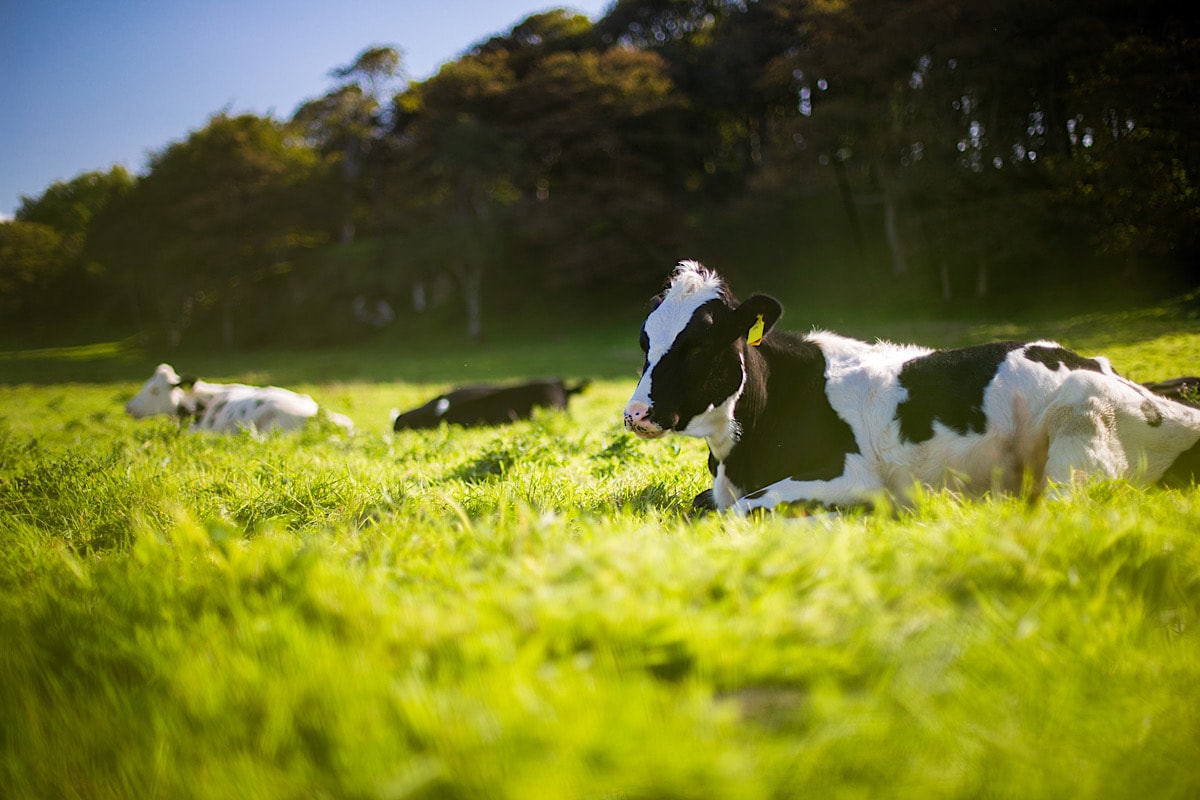
Read More: Milk Options And Alternatives Beyond Babyhood
- Non-Dairy Milk Alternatives. Over the past decades we have seen diets shift significantly. Alternative non-dairy milk has been on the rise as some families choose to go dairy free due to food allergies, digestive issues or because they just want to! Some good milk alternatives to consider are coconut, rice, oat, almond, cashew, and even pea milk. These are great alternatives to ensure your little one is getting enough protein, calcium and vitamin D. You might need to do a little research to see what the best option is for you and your family.
- Lower Fat Options. Whole milk supplies your growing toddler with great nutritional value. Unless your healthcare provider has concerns your child is overweight or obese, starting your little one on lower fat milk options should not be your first choice. After the age of 2, you can start offering lower fat milk options.
Cows milk for babies before 12 months of age is not recommended but strongly encouraged from one year on. Your baby may love it or hate it, but either way you have a great starting point for ways to introduce cow’s milk, how much is enough, and additional things to consider. ”Got Milk”!
WANT TO READ MORE?
Check out this article on Homemade Coconut Milk.
💖 NEWSLETTER: DAILY READS IN YOUR INBOX 💖
Sign up to receive our picks for the best things to do, see and buy so you can relax and focus on more important tasks! Let us help you be the best version of yourself you can be!
GET MORE FROM DAILY MOM, PARENTS PORTAL
Newsletter: Daily Mom delivered to you
Facebook: @DailyMomOfficial
Instagram: @DailyMomOfficial | @DailyMomTravel | @BestProductsClub
YouTube: @DailyMomVideos
Pinterest: @DailyMomOfficial
📌 LOVE IT? PIN IT!📌
